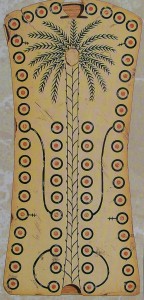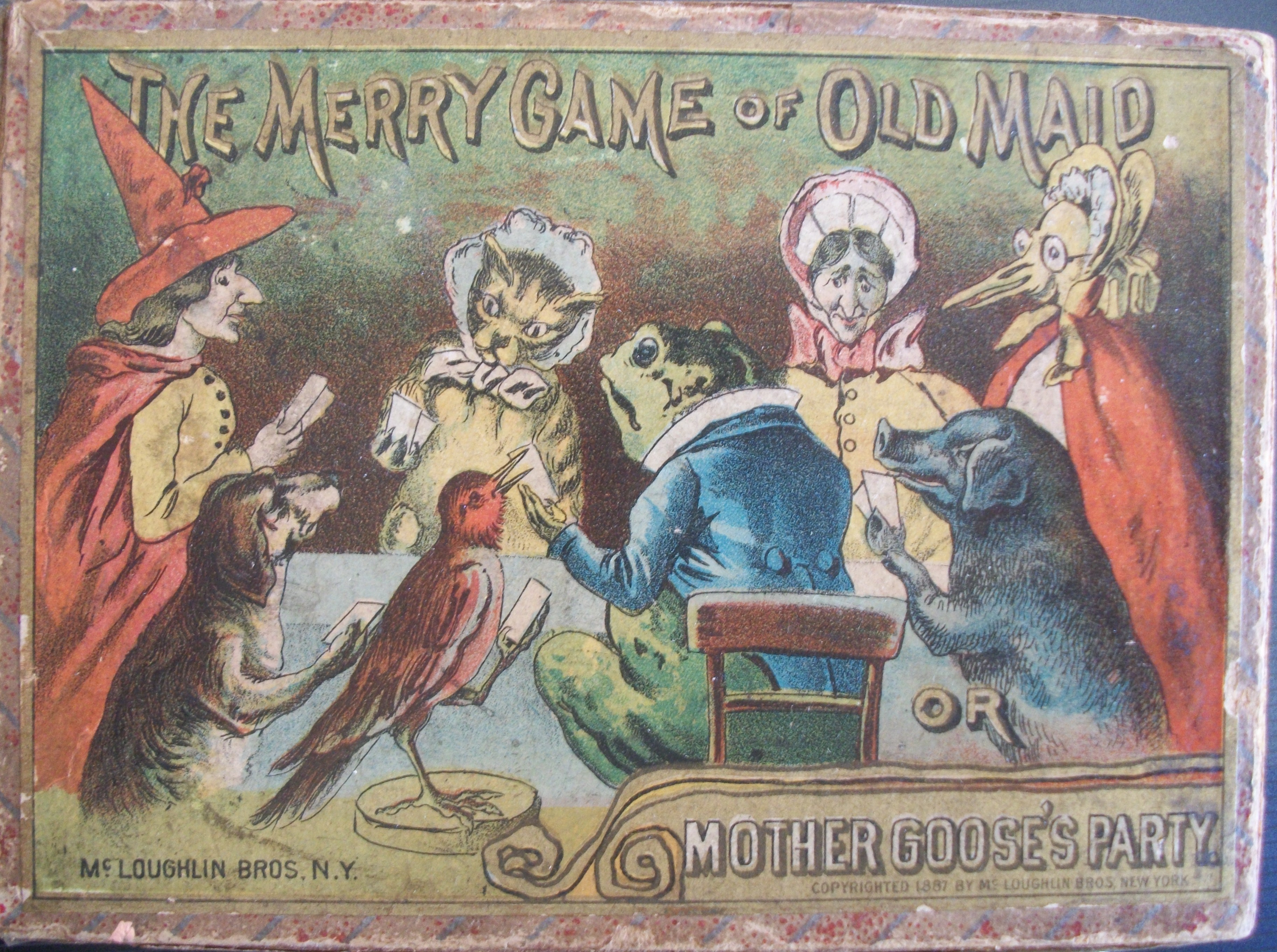Beautifully carved ivory game pieces gave the commonly called game of Hounds and Jackals its name.

Ten carved ivory pegs, with heads resembling five hounds and five jackals, were excavated from a tomb at Thebes by Howard Carter in the 1900’s. The original ivory board with its game pieces was discovered as a complete set. The rectangular playing surface, with rounded top, measured six inches long and three inches wide. The animal headed pegs were contained in a drawer underneath; locked by an ivory bolt. Dating back to around 2000BC, the game was a splendid find, and now rests in the Metropolitan Museum of New York.
Although rules for the game have never been found, Hounds and Jackals (also called The Palm Tree game or 58 holes,) is believed to be have been a popular race game of the time. Many game boards, either identical or similar in nature, have been discovered across the region. The boards consist of a path formed by the holes in which the stick-like pieces are placed. Players navigate the track by rolls of chance (either by dice, sticks, or knucklebones).
The tracks contains a few spaces which are specially marked. Lines are drawn, connecting two holes, which seem to enable players to move several spaces forward if landed upon. Perhaps backwards even. No one knows for sure how the game was exactly played. However, ways for the game to be played today have been constructed based from experimentation and study.

Like mentioned, the game is believed to be a simple race game. Two players take turns moving their pieces according to chance rolls on one side of the board. The winner of the game is the first person to move his pieces to a designated spot. In some rules, this is at the golden central space of the tree. A player would launch his pieces at the top of the board, move down the side of the board and back up one side of the trunk of the tree. Other rules were as follows and went the reverse:
Each player begins moving a piece from the first hole beside the trunk of the tree. Travelling down the side of the tree and then to the outer side of the board, a player strives to reach the top as quickly as possible. Landing on space 6 would allow a player to move to space 20 and landing on space 8 leaps to space 10. It is believed, landing on 20 or 10 would then require the player to move backwards.
Players are not allowed to launch their pieces onto the board until he throws a one. When a one is thrown, his piece is introduced to the game at the center gold space at the top of the tree (top of board, playing the other way). A player immediately rolls again and it is this roll which determines the initial movement onto the holes of the playing surface.
Obviously, only once piece per hole is allowed. Since it is believed each player traverses their own side of the board, there isn’t need for a rule which decides what to do if a player lands upon an opponent’s space.
The game ends once a player achieves the goal of navigating all five of his pieces off the board first. The thirtieth space was the winning position. The previous 29, on each side, gave rise to the name of 58 holes. Even though Hounds and Jackals is an ancient game, playing and exploring the game is still enjoyable today.


Pingback: HOUNDS AND JACKALS, one of the most fascinating games from ancient – 23Facts
Pingback: HOUNDS AND JACKALS, one of the most fascinating games from ancient – 23Facts
Pingback: How to Play the Ancient Egyptian Board Game of Mehen » All About Fun and Games